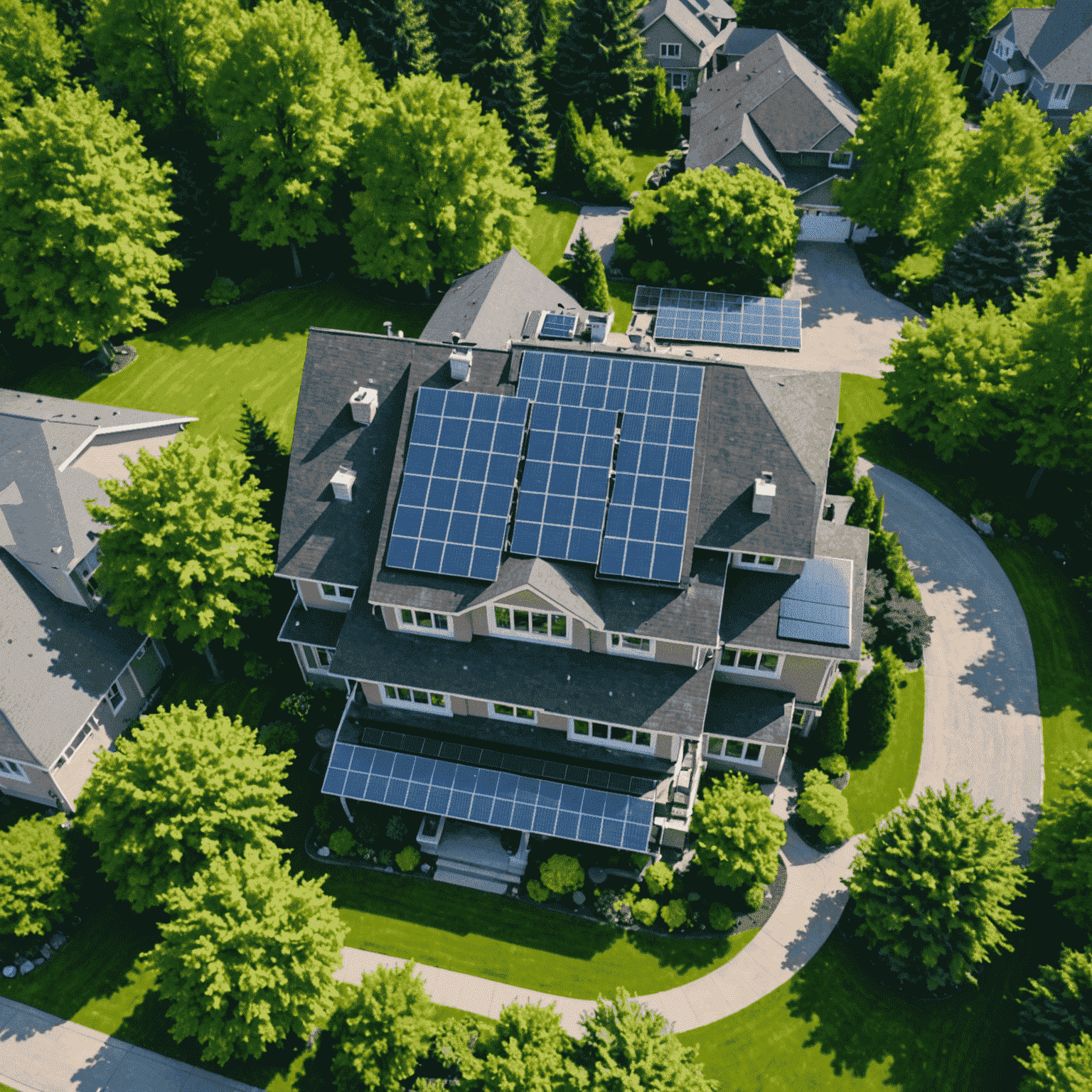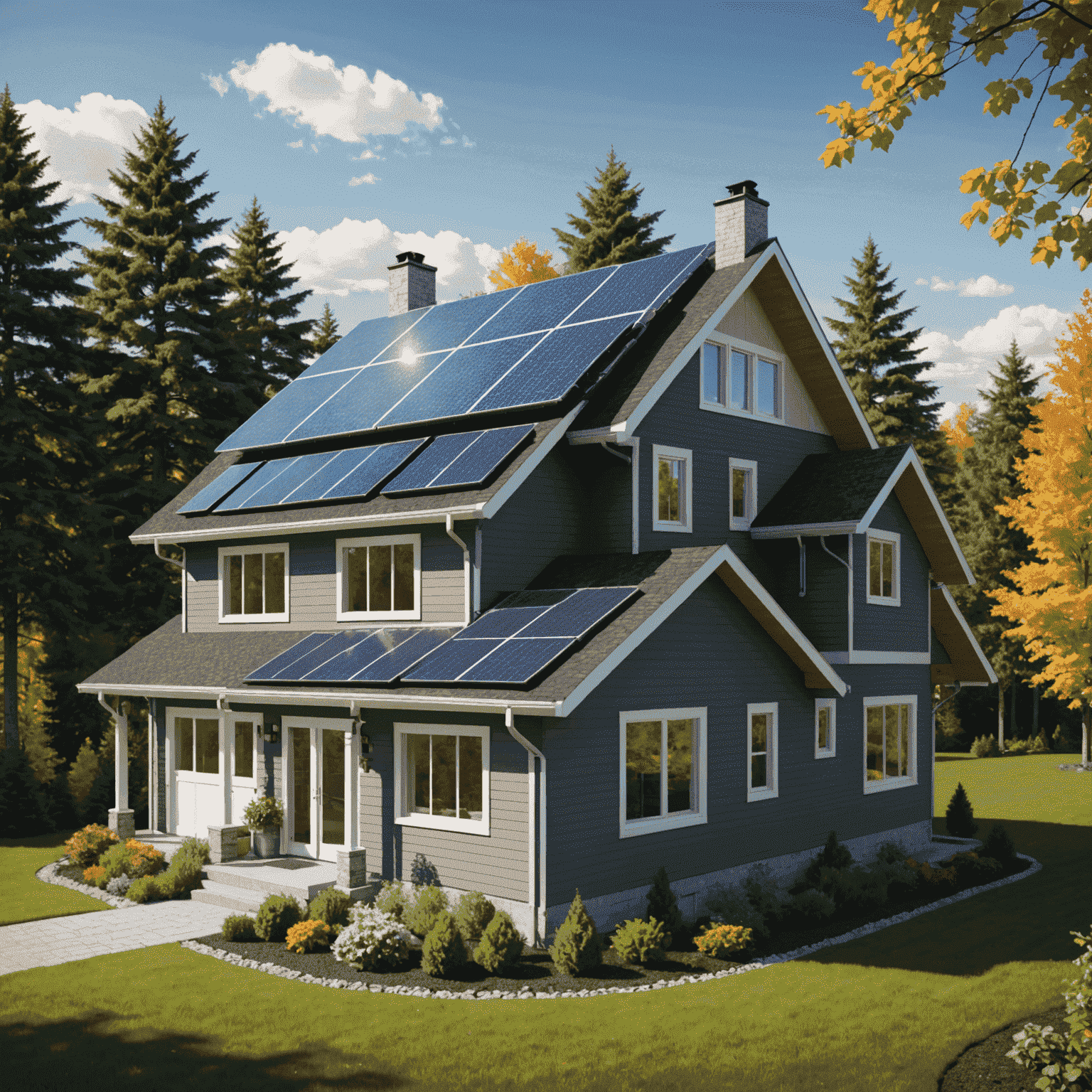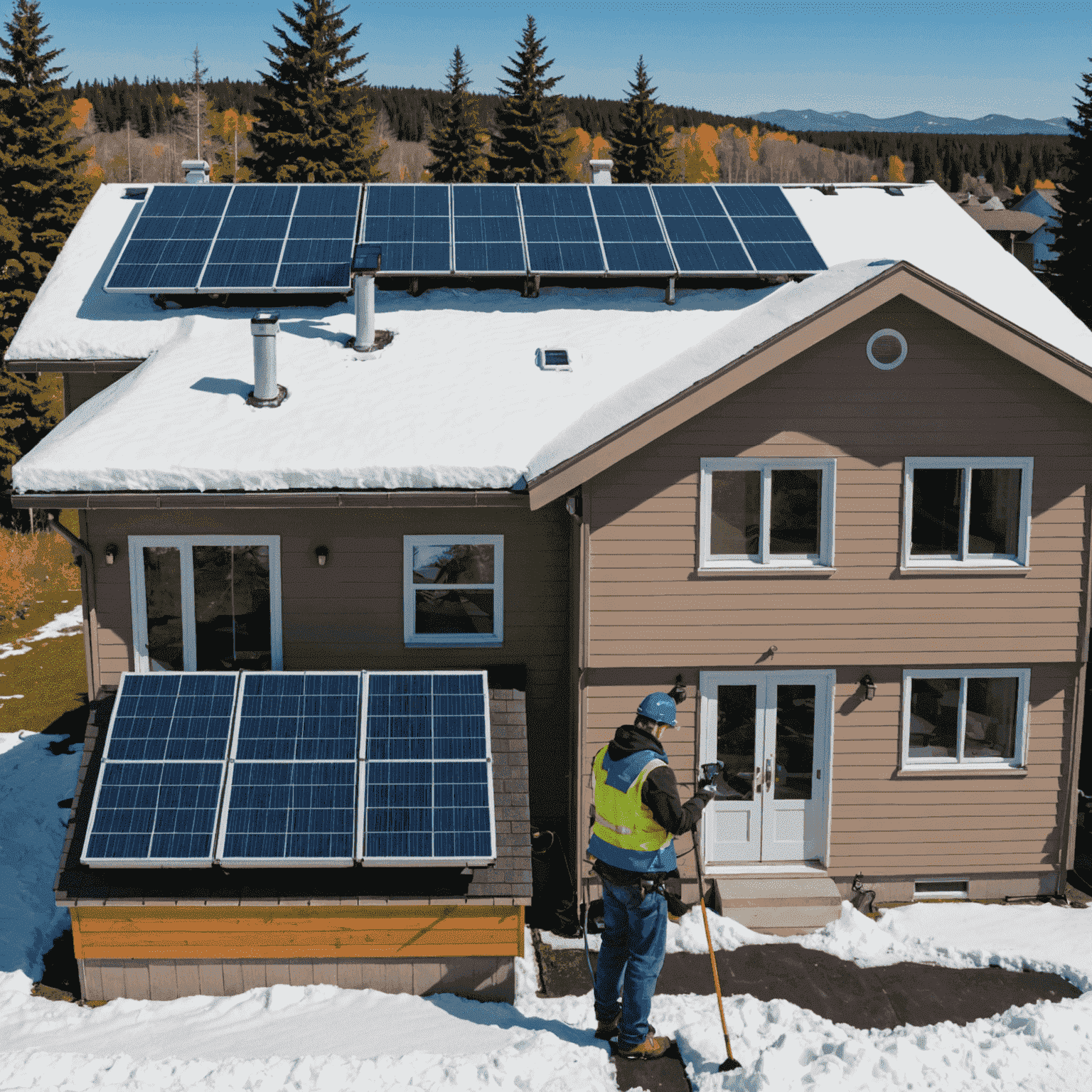Solar Panel Installation Guide
Maximize energy efficiency in your Canadian home with this comprehensive guide to solar panel installation. Learn how to harness the power of the sun and reduce your utility costs.

1. Assess Your Home's Solar Potential
Before diving into installation, it's crucial to evaluate your home's suitability for solar panels:
- Roof orientation: South-facing is ideal for maximum sun exposure
- Roof angle: 30-45 degrees is optimal for most Canadian latitudes
- Shade analysis: Ensure minimal shading from trees or nearby structures
- Roof condition: Your roof should be in good shape and able to support the panels
2. Choose the Right Solar Panels
Select high-efficiency panels that can withstand Canadian weather conditions:
- Monocrystalline panels: Higher efficiency, ideal for limited roof space
- Polycrystalline panels: More affordable, suitable for larger roof areas
- Look for panels with high snow and wind load ratings
3. Design Your Solar System
Work with a certified solar installer to design a system that meets your energy needs:
- Calculate your household's energy consumption
- Determine the number of panels required
- Plan the layout for optimal energy production

4. Obtain Necessary Permits
Ensure compliance with local regulations:
- Building permits
- Electrical permits
- Utility company approvals
5. Installation Process
- Install mounting hardware on the roof
- Place the solar panels on the mounting system
- Wire the panels together and to the inverter
- Install the inverter and connect to your home's electrical panel
- Set up monitoring systems to track energy production
6. Final Inspection and Grid Connection
After installation:
- Schedule an inspection with your local building department
- Arrange for your utility company to install a bi-directional meter
- Activate your system and start generating clean energy
7. Maintenance and Monitoring
To ensure optimal performance and longevity:
- Regularly clean panels, especially after snowfall
- Monitor energy production through your system's software
- Schedule annual professional inspections

Conclusion
Installing solar panels is a significant step towards energy efficiency and cost savings. By following this guide and working with certified professionals, you can successfully harness solar power in your Canadian home, reducing your carbon footprint and utility costs for years to come.